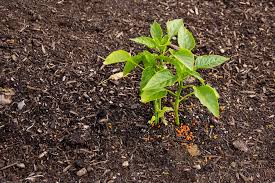
Jul . 30, 2024 05:01 Back to list
NPK 21-21-21 Fertilizer Production Insights and Best Practices for Optimal Plant Growth
Understanding NPK 21-21-21 Fertilizer A Comprehensive Overview of Its Manufacturing and Benefits
Fertilizers play a crucial role in modern agriculture, acting as a catalyst for plant growth and maximizing crop yields. One of the most widely used fertilizers is the NPK 21-21-21, a balanced fertilizer that contains equal proportions of nitrogen (N), phosphorus (P), and potassium (K). Manufactured to meet specific agricultural needs, this formulation offers a versatile and effective solution for various crops.
What is NPK 21-21-21 Fertilizer?
NPK 21-21-21 is a granular fertilizer that comprises 21% nitrogen, 21% phosphorus, and 21% potassium. This balanced ratio makes it particularly suitable for a diverse range of crops, from fruits and vegetables to ornamentals and grains. The key components serve distinct functions in plant nutrition
- Nitrogen (N) is essential for promoting leaf growth and overall plant vigor. It plays a vital role in chlorophyll production, which is crucial for photosynthesis. - Phosphorus (P) supports root development, flowering, and seed setting. It is integral to energy transfer and storage within the plant.
- Potassium (K) enhances overall plant health, improving drought resistance and disease tolerance. It is also critical for the synthesis of proteins and starches, which contribute to crop quality.
The Manufacturing Process
The production of NPK 21-21-21 fertilizer involves several steps, starting from sourcing raw materials
. The primary components—urea for nitrogen, monoammonium phosphate for phosphorus, and potassium chloride for potassium—are carefully selected for their nutrient content.1. Raw Material Preparation The individual raw materials undergo processing to ensure they meet quality standards. This includes grinding, drying, and selecting appropriate particle sizes.
fertilizer npk 21 21 21 manufacturer

2. Mixing The raw materials are precisely weighed and blended in a controlled environment to achieve the desired NPK ratio. This step is critical as it ensures uniformity in nutrient distribution.
3. Granulation The mixed nutrients are then granulated, a process that creates uniform granules which are easier to apply. This phase often involves adding binders and coaters to improve the granules' physical properties, enhancing them for storage and application.
4. Drying and Screening The granulated fertilizer is then dried to remove any excess moisture, followed by screening to sort the granules by size. This ensures that the final product is free from dust and oversized particles.
5. Packaging Finally, the NPK 21-21-21 fertilizer is packaged for distribution. Manufacturers often use moisture-proof bags to maintain the integrity of the product during transit and storage.
Advantages of NPK 21-21-21
One of the most significant advantages of NPK 21-21-21 fertilizer is its balanced nutrient composition, which caters to multiple crop growth stages. Its versatility makes it applicable for both pre-planting and ongoing crop care throughout the growing season.
Another notable benefit is its capability to enhance soil fertility. The quick-release nature of the nutrients allows for immediate uptake by plants, which is crucial during critical growth periods. Furthermore, its formulation supports sustainable agricultural practices, promoting healthier soil and reducing the need for multiple fertilizers.
Conclusion
In summary, NPK 21-21-21 fertilizer is a vital tool for farmers seeking to optimize crop production and health. Its balanced nutrient profile, coupled with a proven manufacturing process, makes it an essential component of modern agrochemical practices. By understanding its benefits and operational mechanics, growers can make informed decisions that lead to enhanced agricultural productivity and sustainability. Whether used on small farms or larger agricultural operations, NPK 21-21-21 stands out as a reliable choice for achieving robust and healthy crops.
-
High-Efficiency Plant Soil Water Soluble Fertilizer Reliable Manufacturer
NewsApr.29,2025
-
High-Potassium Organic K Fertilizer 7-2-4 Supplier & Manufacturer
NewsApr.29,2025
-
10-54-10 High-Phosphate Fertilizer NPK Blend for Root Growth
NewsApr.28,2025
-
NPK 8-2-12-4 & 20-20-20 Compound Fertilizer Suppliers Crop Boost
NewsApr.28,2025
-
Premium 50 lb Fertilizer Bags Bulk Supplier & Factory Deals
NewsApr.28,2025
-
Different Types of NPK Fertilizer Manufacturer & Supplier Custom Blends
NewsApr.28,2025
